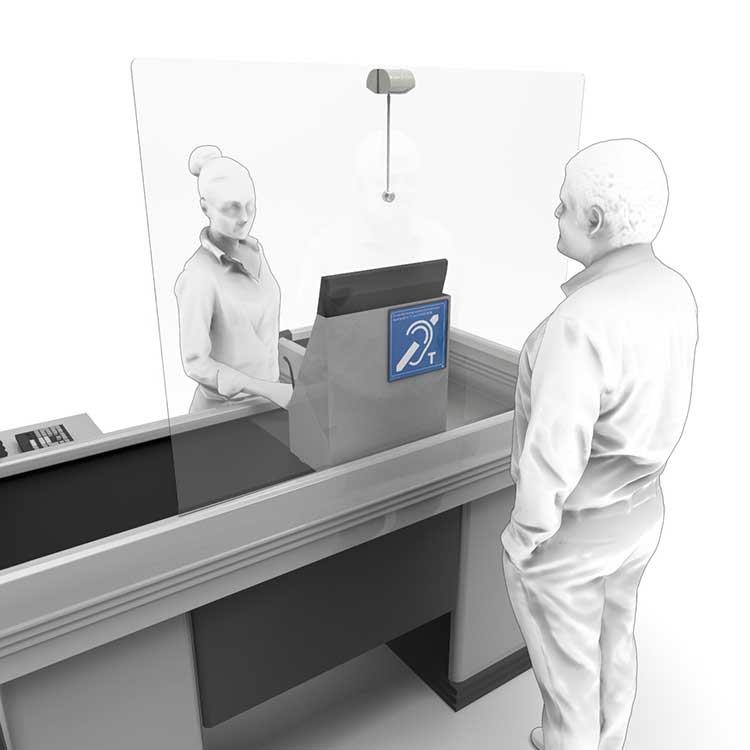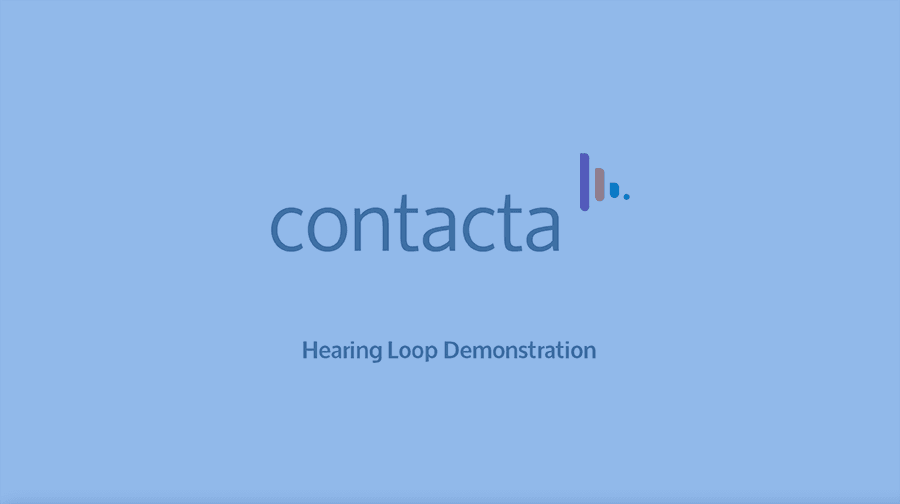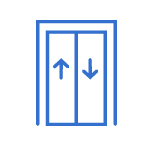One to One Hearing Loops
One to one hearing loops allow customers with hearing loss to enjoy clear conversation with members of staff. This can be anywhere face-to-face communication takes place, including:
Large Area Loops
Large area hearing loops transmit music and speech to hearing aid users in large venues such as:
Integrated Hearing Loops
This type of hearing loop is built into unmanned machines that deliver important or safety messages, such as:

Infrared (IR)
Infrared systems use light waves to carry sound. Transmitters flood the space with invisible IR light and users pick up an audio signal using an IR receiver.
These assistive listening devices are ideal for venues where confidentiality is important as the sound waves can’t travel through doors, walls or glass. IR systems are also perfect for venues where users move between rooms that have different sound sources.

Radio Frequency (RF)
Radio frequency systems use wireless radio waves to transmit sound. Users listen to the sound via a receiver unit with headphones or, if they wear a hearing aid, via an inductive neck loop.
Unlike IR systems, signals can be transmitted through walls, glass partitions, ceilings or other obstacles. They can be used in:

Window Intercom Systems
Clear barriers installed for infection control or security can cut sound levels by up to 15db.
Window intercoms transfer speech from one side of the partition to the other, removing the need for raised voices. These are especially important in settings like hospitals or banks, where confidentiality and dignity need to be maintained.
To consider…
There are other assistive listening devices and technologies being developed, such as Bluetooth, but these are some way from being considered in the same light as the options above.
The International hearing Loop Manufacturers Association (IHLMA) has a complete guide to assistive listening technologies, available to download from its website.
 MADE IN THE UK: We’re proud to say our Contacta designed products are manufactured in the UK
MADE IN THE UK: We’re proud to say our Contacta designed products are manufactured in the UK

























